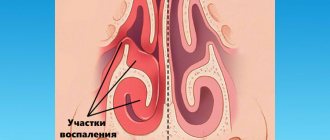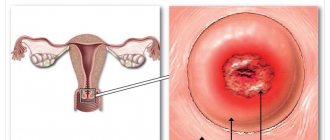Like any other pathological conditions, there can be reasons for a runny nose in infants.
- physiological;
- pathological.
Physiological reasons
The mucous membrane of the nasal cavities immediately after birth, although formed correctly, cannot fully perform its functions and participate in the regulatory mechanisms of the body. In some children, this leads to excessive dryness of the nasal cavity with insufficient secretion production, while in others it leads to excessive secretion - a newborn runny nose.
The functioning of the mucous membrane returns to normal only after reaching 10 months of age. There's no need to worry. This is not dangerous and should go away on its own over time, but the ENT doctors at Dr. Korenchenko’s clinic advise you to see a pediatrician. so as not to miss the beginning of the development of the pathological process behind the imaginary well-being.
Pathological causes
The most common cause is colds, which newborns suffer from especially often. Your own immunity has not yet been formed, and your mother’s is not always effective enough and, moreover, weakens every day. Any infection that goes completely unnoticed in an adult or older child can cause acute respiratory infections and a runny nose in a newborn.
The first symptoms of an acute infectious disease are a rise in temperature and a runny nose in the baby. Later, cough, shortness of breath, and difficulty breathing occur. Sleep and appetite disorders. The child becomes restless, cries, and refuses to eat. Excessive snot in a baby causes irritation of the skin around the nose, on the upper lip, and in the nasolabial folds. At the first appearance of such symptoms, we strongly advise you to immediately contact your pediatrician.
Another common cause of a runny nose in a newborn is an allergic reaction to an external irritant. With age and with the formation of one’s own full-fledged immune defense, this disease can go away on its own, but in infancy, intolerance to any substances is more common than in adults. Irritants can be ordinary household dust, the hair of pets or birds, foreign odors, creams and preparations that are used to treat the baby’s skin, even the smell of the mother and breast milk can provoke snot in a baby.
A relatively uncommon cause of snot in infants is vasomotor rhinitis, a disease associated with impaired blood supply to the nasal mucosa. Only a doctor can make a correct diagnosis.
General information
A runny nose is a very common disease that often occurs not only in adults, but also in the smallest children - infants. And if adults often simply do not pay attention to a stuffy nose, then rhinitis in a baby causes him noticeable discomfort.
Feeling unwell due to a stuffy nose, the baby is capricious, eats poorly and sleeps restlessly. Signs of nasal congestion in young children are not uncommon. After all, in newborns, the immune system is just developing, and any seemingly insignificant reason can lead to the appearance of mucus in the nasal passages. A runny nose often begins after hypothermia and accompanies allergic manifestations and autonomic disorders. It is important for parents to understand that even slight swelling of the mucous membrane in babies leads to difficulty breathing. This condition not only exhausts the child, but can also subsequently lead to complications when the inflammatory process spreads to the organs of the respiratory system. How to determine that a child needs help and what treatment methods are appropriate to use can be found in this article.
Additional benefits of Derinat?
- Thanks to the properties of Derinat, it can be used not only as a treatment for a viral runny nose, but also to prevent further episodes of acute respiratory infections.
- Derinat does not have a pronounced odor and does not irritate the mucous membranes. And this has a beneficial effect on the reaction of children, and therefore on the result of treatment.
Read the instructions for how to properly use Derinat in the treatment of ARVI.
Pathogenesis
The development of a runny nose in most cases is caused by inflammation in the nasal mucosa. This process can occur independently or be a complication of infectious processes ( measles , influenza , scarlet fever , etc.). In almost 90% of cases, the mucous membrane of the paranasal sinuses is involved in the pathological process, which swells, stagnation and catarrhal inflammation develop in it.
Allergic rhinitis histamine production . The air contains many impurities that enter the nose and provoke the release of histamine. It also leads to an increase in blood flow and swelling of the walls of blood vessels. As a result, the mucous membranes produce mucus, which leads to a runny nose.
In infants, rhinitis develops quite often, as this is determined by the structural features of the nose in young children. The size of the nasal cavities and passages in children is smaller and shorter, and the walls of the shells are thicker. They have a functional immaturity of their defense systems. Since the nasal passages are very narrow, the aeration and drainage function of the paranasal sinuses is impaired. The mucous membrane of a baby is easily vulnerable and very loose, so even a minor inflammatory process leads to the development of rhinitis . In addition, there is no cavernous tissue in the child’s nasal turbinates, which causes the low effectiveness of vasoconstrictor drops. Since the paranasal sinuses in infants are not yet sufficiently developed, sinusitis , frontal sinusitis , and ethmoiditis develop very rarely in them.
Most often, rhinitis develops during a period when very sharp temperature fluctuations are observed. Under such conditions, pathogenic and opportunistic microflora in the nasal cavity, oral cavity and nasopharynx, which ultimately leads to the development of an infectious process.
Why is a runny nose in a 1 month old child a problem for parents?
Children of the first year of life do not know how to blow their nose. If secreted mucus, containing microorganisms and traces of their vital activity, stagnates in the nasal cavity, this can lead to the development of complications. In such a situation, a bacterial infection is more likely to occur, which will not have the most favorable effect on the further course of the runny nose.
Kids really don’t like interference in their bodies. And in a situation with a runny nose, parents have to resort to mechanical removal of mucus and crusts from the nasal cavity. Such treatment can turn into a real test for the whole family.
To prevent this from happening, it is necessary to take measures from the very beginning of the disease aimed at preventing complications and speeding up the child’s recovery.
Classification
The following types of rhinitis are defined:
- Infectious – develops as a consequence of the development of an infectious process.
- Allergic - as an allergic reaction to external irritants.
- Non-allergic, non-infectious persistent - nasal disorders, which include different types of specific rhinitis (medicinal, occupational, hormonal, idiopathic vasomotor).
In some cases, when talking about runny nose in infants, experts identify the so-called physiological runny nose in infants. Physiological rhinitis develops immediately after childbirth and is a consequence of the adaptation of the mucosal microflora to the environment.
Can a cold be dangerous?
The most serious complication in infants is breathing problems. Respiratory failure is the medical name for difficulty breathing. The following are symptoms that should prompt you to immediately consult a doctor or call an ambulance:
- Difficulty taking every breath or shortness of breath
- Difficulty breathing so much that the baby can barely cry
- The spaces between the ribs contract with each breath
- Breathing becomes noisy (eg, wheezing)
- Breathing occurs much faster than usual
- Your baby's lips or face turn blue
- Wheezing (purring or whistling)
- Breathing occurs much faster than usual
- Swallowing problems and drooling
Causes
The reasons for the development of a runny nose in children may be associated with exposure to a wide variety of factors. Rhinitis develops due to the following reasons:
- viral and bacterial infections;
- influence of allergens;
- indoor air is too dry;
- exposure to toxins and other environmental factors;
- entry of a foreign body into the nasal cavity;
- the so-called “runny nose on teeth” - can begin when the baby is teething;
- hypothermia, overheating, sudden temperature fluctuations.
What is Derinat?
It is sodium deoxyribonucleate. In other words - nucleic acid. Derinat helps improve the functioning of the immune system at different levels and reduce the activity of pathogenic microorganisms. In addition, Derinat has a reparative (restorative) effect on the mucous membrane, which is very important in the treatment of runny nose caused by viruses. It is the mucous membrane that serves as the first and main protective barrier against both respiratory viruses that cause a runny nose and a secondary bacterial infection that can cause complications. Taking Derinat helps strengthen the mucous membrane, improve its barrier properties and avoid complications. It is especially important to strengthen the mucosa when using vasoconstrictor drops, which can provoke drying and damage to the epithelium.
Symptoms
A runny nose in a newborn baby very often develops immediately after he is born. In the process of adapting to the outside world, the microflora of the nasal mucosa also adapts and therefore secretes a lot of mucus. There are three stages of runny nose in children.
- The first stage is dry. During this period, the child’s breathing is difficult, but mucus does not separate from the nose.
- The second stage is catarrhal. At this time, the nose is stuffy, and copious clear discharge constantly appears from it.
- The third stage is inflammatory. During this period, bacterial inflammation of the mucous membrane begins, the discharge becomes thick and has a greenish-yellow color.
As a rule, runny nose in young children is more severe than in adults. In addition, it develops very rapidly, since the nasal passages in infants are very short, and the mucous membranes are vulnerable. It is also important that an infant cannot blow his nose, so his nose is constantly stuffy and there is severe discomfort when breathing. As a result, a small child experiences unpleasant symptoms: headache, insomnia , loss of appetite. When a baby has a runny nose, the act of sucking is disrupted, and this leads to the baby losing weight, sleeping poorly, and being capricious.
Nasal congestion is often noted in the morning and evening. This condition may indicate that the indoor air is too dry. Sometimes, after sufficient air humidification, the baby's condition improves.
In infants with acute rhinitis, the pathological process often spreads to the mucous membrane of the pharynx, middle ear, nasopharynx, larynx, trachea, bronchi, and lungs. Rhinitis is very severe in premature babies with weakened immune systems .
It is important for parents to know what the symptoms of a physiological runny nose in an infant in order to distinguish it from a developing disease. With the development of physiological rhinitis, clear and liquid mucus is released from the nose, and there is relatively little of it in the nose. There is no swelling in the nose or redness of the conjunctiva. Also, with a natural runny nose, there are no signs of intoxication .
Sometimes the baby is capricious, but signs of severe lethargy and anxiety do not appear. Another sign of physiological rhinitis is a kind of “grunting”. These are the sounds the baby periodically makes when trying to clear his nose. The child can sleep with his mouth slightly open, but does not snore. Despite the fact that this condition is physiological, the baby may periodically have problems with eating or sleeping. If mucus is released from the nasal passages for more than a week, parents should definitely consult a doctor.
It is important to understand that the following symptoms in a baby are alarming symptoms:
- temperature increase;
- swelling and hyperemia of the nasopharynx;
- conjunctivitis;
- strong and cloudy nasal discharge.
If these signs occur, it is better to immediately consult a pediatrician.
Why does snot change color?
This question deserves our attention because it is associated with one myth. Some people are very fond of sharing information about the “ripening” of snot with young parents. If they turn green, they are ripe and will soon pass. Actually this is not true. The fact that nasal discharge has acquired a green tint indicates that a bacterial infection has been associated with ARVI.
If you leave a runny nose without treatment and wait for it to go away on its own, while a bacterial infection has developed, you can wait for complications to appear. In this case, microorganisms can penetrate into the maxillary or frontal sinuses. By multiplying there, they provoke the development of an inflammatory process in the sinuses, and this contributes to the appearance of edema. In this regard, the child will feel pressure and even pain in the sinus area. Treating such complications is much more difficult than a simple runny nose caused by a virus. Therefore, you should not expect that the “greenness” will go away on its own.
Prevention
To prevent the development of a runny nose in young children, you need to follow simple rules:
- Constantly humidify the air in the children's room, using special devices or, in extreme cases, water containers placed around the room. It is especially important to humidify rooms during the heating season.
- Ventilate the room as often as possible. You need to ventilate your baby’s room at least twice a day for at least 10 minutes.
- Ensure the correct temperature - the room should not be too hot. The optimal temperature is 18-20 degrees.
- Carry out wet cleaning in the nursery every day.
- From time to time, you can irrigate the baby’s nasal mucosa with products based on sea water.
- Walk with your baby in the fresh air as often as possible and be sure to ventilate the room.
- Practice breastfeeding.
- Do not vaccinate when the baby has a runny nose or other illnesses.
- If one of the adults has a cold, he needs to wear a gauze bandage and change it every two hours. It is important to wash your hands as often as possible and avoid contact with the baby.
What is important to remember when treating a runny nose?
Even if you know how to treat a runny nose in a 1-month-old child, without following several important principles for treating ARVI, you will not cope with this problem quickly.
- During illness, do not forget about the body’s increased need for fluid. If a child has a fever, his body loses water in large quantities. Therefore, it is worth offering him something to drink (plain drinking water) from time to time. If your baby is breastfed, give him breastfeeding more often during this period.
- If the air at home continues to be too dry and warm, recovery will be much slower due to the drying out of the nasal mucosa. Therefore, it is necessary to determine what the temperature and humidity are in your home and adjust these parameters if necessary.
- Regularly irrigate the mucous membranes of the child’s nasal cavity with saline solutions (from 4 to 6-8 times a day). Then the mucus that forms will not “stagnate”, the nasal epithelium will be moisturized and recovery will occur much faster.
Consequences and complications
If a runny nose in a baby does not go away for a long time or is repeated very often, later it can provoke the development of sinusitis , otitis , sinusitis , adenoiditis , bronchitis . Insufficient oxygen supply for a long time can lead to delayed development of the baby.
Prolonged runny nose leads to general poor health and anxiety in the child, and can also interfere with normal nutrition.
The baby is one month old: what can’t be used to treat a runny nose?
- You should not use traditional medicine (the juice of any plants, honey) in the treatment of infants. You may get a completely unexpected reaction in the form of individual intolerance.
- Avoid using products that have age restrictions. Please note that not all sprays and drops are suitable for use in infants.
- You shouldn’t “warm your nose.” This way you can speed up the spread of infection and aggravate the baby’s condition.
Products Derinat
- Drops
- Spray
- Bottle
- Injections
Useful articles:
How to treat children Treatment of children with folk remedies About diseases: Influenza ARI/ARVI Cough Runny nose
Disease prevention What to feed What to drink About drugs How to entertain Tips Adult health
Nasal cavity toilet
Irrigation required (flushing, irrigation
) nasal mucosa with water-salt solutions, preferably ready-made. Such solutions are microbiologically safe and stable in composition. They come in the form of drops and aerosols. At the same time, the “nasal douche” can be considered the most effective in terms of the spraying method, since it does not flow down the bottom of the nasal cavity (like drops) and is not as hard (like a simple spray). Nasal shower combines strength and delicacy.
The purpose of irrigation is the mechanical removal of infectious agents and secreted secretions.
Based on the salt content, solutions are either isotonic (saline) or hypertonic. The first ones simply cleanse and moisturize, so they are used mainly for prevention. The latter, due to the osmotic effect, reduce swelling, inhibit the growth of bacteria and improve the function of the mucous membrane, facilitating nasal breathing. In what period, with what frequency and for how long to use them, only a specialist can decide. Therefore, it is better to coordinate the choice of solution with your doctor.
It is also important to teach the child to blow his nose correctly or to ensure outflow/evacuation ( elimination)
) discharged from the nasal cavity using aspirators.










